https://www.denon.jp/ja-jp/blog/3857/index.html
https://www.denon.jp/ja-jp/blog/3857/index.html
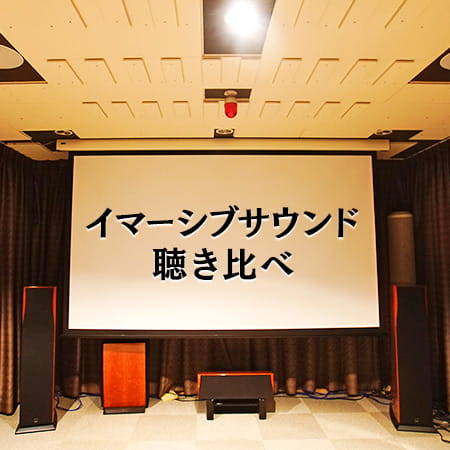
The editorial department listened and compared Auro-3D, Dolby Atmos, and DTS:X, which are attracting attention as new immersive sounds following Dolby Atmos and DTS:X. I will review mainly the sound source of the Oslo chamber choir "Ensemble 96".
Following Dolby Atmos and DTS:X, Auro-3D, which is attracting attention as a new immersive sound, was installed in the AVR-X6400H and AVR-X4400H for the first time in Japan.
Therefore, Denon's official blog editorial department listened and compared Auro-3D, Dolby Atmos, and DTS:X.
This review will focus on the new album "So is my love" of the Oslo chamber choir "Ensemble 96" presented in the "Campaign that you can get if you buy AVR-X6400H / AVR-X4400H" .
11.2ch AV surround receiver
AVR-X6400H
Suggested retail price: 300,000 yen (excluding tax)
9.2ch AV surround receiver
AVR-X4400H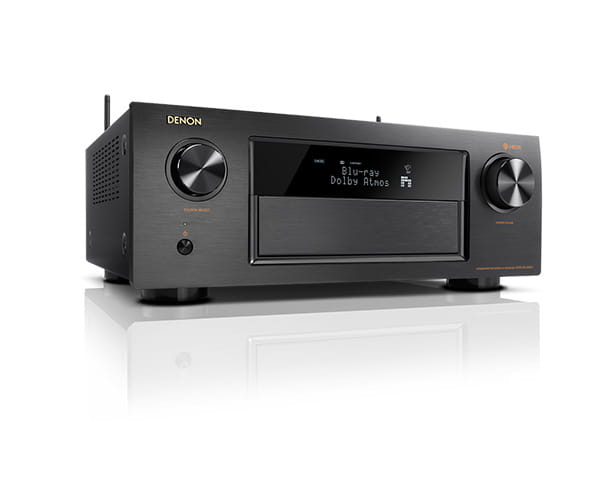
Suggested retail price: 170,000 yen (excluding tax)
Overview of “Campaign that you can get when you buy AVR-X6400H / AVR-X4400H”
Auro-3D recorded, high-quality Blu-ray Audio disc / SACD Hybrid disc (2 discs) from Norwegian 2L label for those who purchase the AV Surround Receiver "AVR-X6400H" or "AVR-X4400H" during the campaign period. group) "Ensemble 96 / My love (So is my love)" as a gift.
In addition, 50 people will receive a wireless speaker “HEOS 1” compatible with streaming services such as Amazon Prime Music, AWA, and Spotify by lottery. Until January 20, 2018!
Click here for details
That's why I decided to listen to Auro-3D, which is the first in Japan to support AVR-X6400H and AVR-X4400H, in the AV listening room at the head office.
As you can see, this listening room has ceiling speakers installed on the ceiling, making it possible to listen to various types of stereophonic sound.
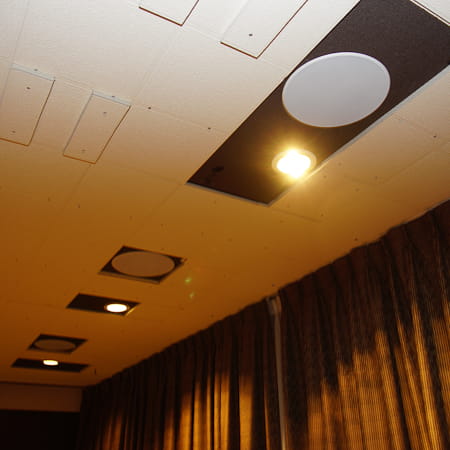
First, let me briefly explain Auro-3D.
The surround sound used in home theaters continues to evolve year by year.In the past few years, speakers such as Dolby Atmos and DTS:X have been installed so that the sound comes out from above, making it more three-dimensional. The surround format, which allows you to enjoy an immersive sound field, is becoming mainstream. These are said to be "immersive sound" because they allow you to be more immersed in the sound than ever before. Auro-3D is attracting attention as the third immersive sound after Dolby Atmos and DTS:X.

For information on how surround sound works, Dolby Atmos, DTS:X, etc., please see Denon's official blog entry " What is Surround Sound for Super Beginners?"
So what is the difference between the preceding Dolby Atmos, DTS:X and Auro-3D?
Technically speaking, there are two big differences.
First, Dolby Atmos and DTS:X are object audio (a mechanism that specifies how sounds are played based on position), while Auro-3D is a channel-based audio technology similar to conventional surround. That means.
And the second is that each channel supports lossless playback (you can enjoy high-resolution surround sound).
As a result, you can enjoy "more natural and realistic 3D sound". This can be said to be the greatest feature of Auro-3D.
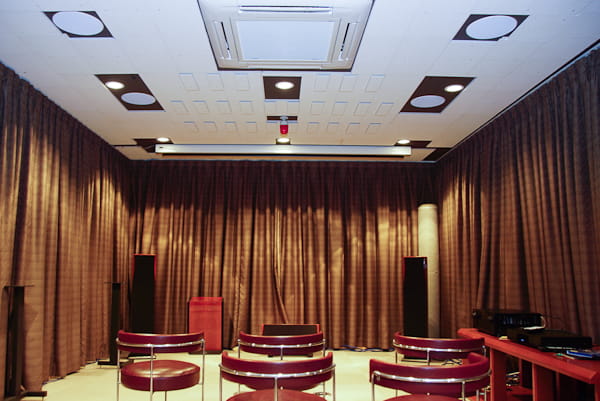
So how amazing is Auro-3D? I'm going to check it while comparing it with other formats this time. I wanted to concentrate on the sound and check the difference, so I deliberately listened without using the screen.
AVR-X6400H is used for audition.
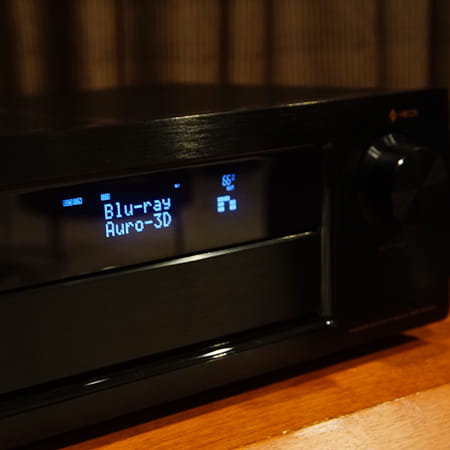
And the sound source is the sound source that is eligible for gifts in the "Campaign that you can get if you buy AVR-X6400H / AVR-X4400H", the new album "Watashino" by the Oslo chamber choir "Ensemble 96" where you can enjoy the charm of Auro-3D. I will listen to "So is my love".
Ensemble 96 is an Oslo chamber choir that has been nominated for two Grammy Awards for Best Choir and Best Surround Sound.
This work seems to have been recorded in a church in Oslo. Click here for album details .
By the way, this album was recorded in 24bit/352.8kHz, the highest resolution currently available, and the playback formats are 5.0 DTS, 9.0 Dolby Atmos, 9.0 Auro-3D, and 2.0 LPCM.
Therefore, it can be said that it is a perfect software for auditioning the difference in sound depending on the format.
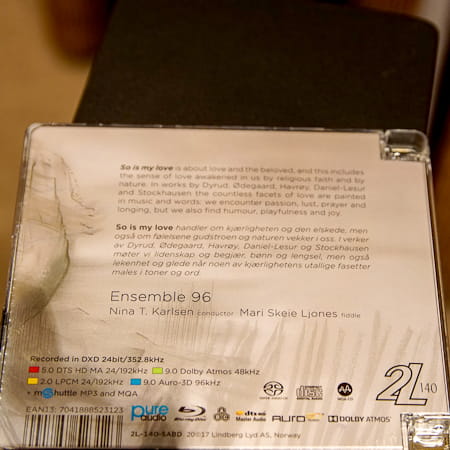
↑The recording format and playback format are listed at the bottom of the back of the jacket.
So I listened to it.
First, in high-resolution stereo. A really beautiful and soft voice.
You can really see the quality of the recording. As it is a hymn, it has a very divine sound.
Now let's listen to this with stereophonic Auro-3D.
Since it was recorded in a church in Northern Europe, the chorus resonates beautifully and delicately in a sound field with a very high ceiling.
Even the clear air feels real.
It's a favorite of immersive sound, and if you close your eyes, you can only think that you are in a Nordic church.
When I changed the format and listened to it in Dolby Atmos, I got the impression that it was a little edgy, although the sound field was also wonderful with stereophonic sound.
In terms of photos, it feels like Instagram. I felt a somewhat movie-like dramatic coloring.
The characteristics of the sound may be due to the difference in decoding of each company.
In other words, each channel of Auro-3D is high-resolution, and it is not rendered like object audio, but it is mastered as a channel.
I also listened to it on DTS:X.
The impression of the sound has also changed slightly, but it is the same trend as Dolby Atmos.
However, DTS:X is a 5-channel system with no sound from above, so I couldn't feel the sound field from the high ceiling and the beautiful reverberation of a chorus falling from the ceiling.
Before the difference in format, I felt that the difference in sense of reality and sound field due to the presence or absence of upward sound became clearer.
I've compared Dolby Atmos, DTS:X, and Auro-3D several times, but I think it's because of the lossless 96kHz high-resolution sound produced by the proprietary standard, but Auro-3D still has a natural sound field. seemed to be the best.
Next, I listened to a normal CD with Auro-3D.
This is partly due to the fact that there is still little software that supports Auro-3D, but Auro-3D uses its own Auro-Matic® algorithm to convert normal content such as monaural, stereo, and 5.1 into natural 3D sound. Since it was said that it also has a function, I will try it.
So I picked up Madonna's "Ray of Light".
Artist name: Madonna
Album: Ray of Light
First, I listened to it in a normal stereo. Ray of Light is an album released in 1998. Although it's pop, it has techno and ambient tastes, lots of electronic sounds, and the recording is excellent. So how does this become stereophonic in Auro-3D?
When I played it back with Auro-3D, the electronic sound suddenly spread three-dimensionally far beyond my expectations. The feeling of being surrounded by sound. The algorithm will automatically judge, but the electronic sound moves rapidly from front to back while the song is localized in the front, and it feels like a sound source mixed for 3D.
This was also compared with Dolby Atmos and DTS:X. The nuances of the three-dimensional effect were quite different due to the difference in the algorithm, but I think that likes and dislikes around here will be your preferences.
However, when compared to the stereo sound of both Dolby Atmos and DTS:X, the sound is sharper and more powerful. From the point of view of fidelity of the original sound, Auro-3D seems to have the least difference in sound quality compared to stereo playback.
This depends on the genre of music, so if you have time, I would like to compare and listen to classical, jazz, and ambient music.
Just listening to Dolby Atmos, DTS:X, and Auro-3D sounds like you'll have a great time.

Auro-3D came out after Dolby Atmos and DTS:X.
Auro-3D's natural 3D sound is a must-see for audiophiles as well as movie fans.
Shops where you can watch Auro-3D, which has just landed, are introduced on the following page.
Please try the immersive sound of Auro-3D at a store near you.
Auro-3D viewing available store list
Currently, two campaigns that you can participate in by purchasing a Denon AV surround receiver are being held at the same time! You can apply for both! Don't miss this chance!
On December 16th (Sat) and 17th (Sun), a joint event of "Let's Listen to Movies Project" will be held.
5 audio brands are available. Denon will demonstrate with AVR-X1400H and 6400H. We look forward to seeing you there.
Click here for details
(Editorial Department I)
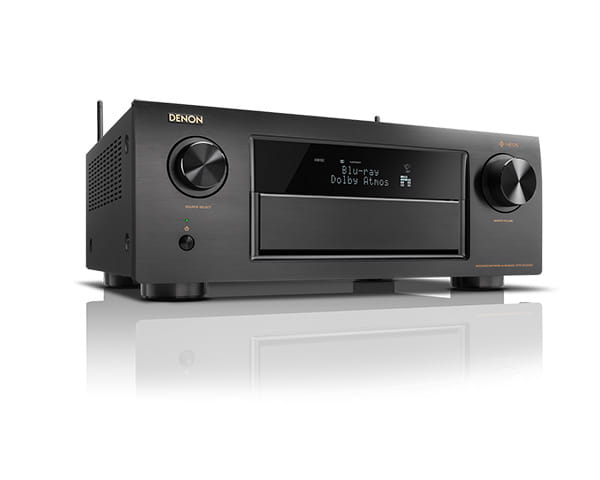
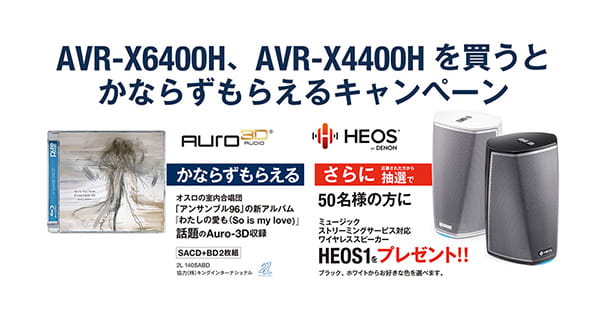
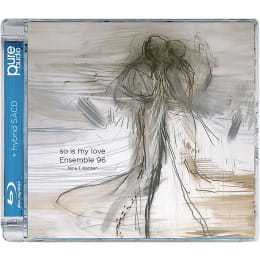

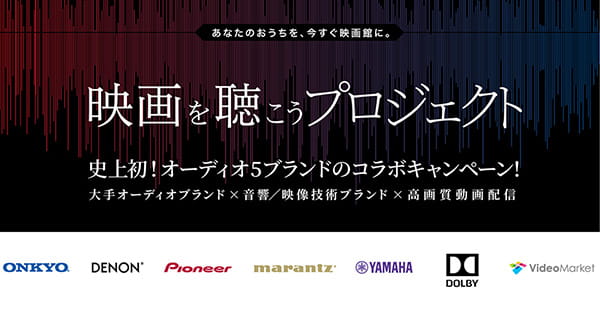








0 コメント:
コメントを投稿